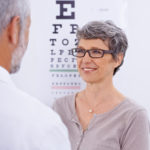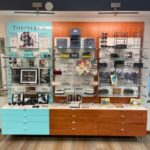By Shelley Smith, ABOC, CPOA

May 18, 2022
Progressive eyewear can improve patients’ lives, enhancing vision and convenience. Eliminating the need to carry reading glasses everywhere, and offering better vision, seamlessly, both near and far, is something patients will be grateful for.
To get to that point, however, you first have to be successful in how you prescribe progressives and work with your team to educate patients about their new glasses. Here is what has worked in our practice.
We Use a Doctor-Directed Process
We use a doctor-directed process in which the doctor starts the conversation about new glasses by giving their recommendations to the patient. The doctors play an integral role in helping patients make their decision on the lens type that will work best for them. As opticians, we rely on the doctor to lay the groundwork for the education we will provide the patient in the optical. We know that in our practice the doctor will have already pointed out to patients the benefits of progressive lenses, and why they are superior to bifocals, lined multifocals or relying on reading glasses.

The optical in Smith’s practice. She says that doctor-directed prescribing and enhanced optician education made a significant difference in the number of patients opting to wear progressives and experiencing success in their new glasses.
Part of the doctor-directed process is that the doctor begins the conversation on the type of lens the patient would be most successful with. The doctor gives their recommendation to the patient in front of the optician and talks to the optician about anything special or unusual they uncovered during the exam. This could be anything from an unusual prescription or a special hobby the patient enjoys. The optician then takes over and digs deeper with the patient to determine the specific lens and treatments the patient needs. These conversations are imperative to the optician recommending the perfect solution to the patient.
When we first started using the doctor-directed process, we saw a huge increase in the percentage of patients trying and being successful with progressive lenses. Eighty-two percent of our multifocal lens sales are now in progressive lenses. Having the doctor begin the conversation, and relay their recommendation to the optician, is critical to making this process a success.
Our Opticians Fully Understand How Progressives Work
For opticians to create successful experiences for progressive wearers they have to have a solid understanding of how the lenses work, how to take measurements properly, an understanding of how the patient is going to use the glasses and how to troubleshoot if a patient is dissatisfied with their new glasses. We use various training methods starting with on-the-job training, Vision Source Learning modules and in-person training from vendors and other experts.
The manufacturer that we use for most of our lenses has great training resources, and when a new product is launched, they provide extensive resources for opticians. Our lab provides basic and advanced courses for opticians to grow their skills, which we have all opticians go through. These are amazing resources for us when we are training new opticians, and we successfully integrated these into our training program.
We Make Sure Our Younger Opticians Understand Presbyopia
Younger opticians, who have not experienced presbyopia themselves, can have trouble understanding the perspective of a person who needs a multifocal lens. Not understanding what a patient is seeing makes it difficult to understand how to troubleshoot problems, or even make the best lens recommendation based on how the patient uses their glasses.
The most effective training that we have for opticians struggling with progressive lenses is the training we get from our lab. Every time we send opticians to that training, they come back with a great understanding of how to work with the lenses and significantly more confident in talking to patients about progressive lenses.
Other Articles to Explore
We Manage Patient Expectations
The most important part of working with progressive wearers is to manage expectations from the beginning of the conversation. It is imperative that progressive wearers understand how the lenses work and the limitations of the lenses. It is important that a patient who is choosing a lower-cost lens understands the tradeoffs that come with that lens. We have a great video resource we use to help explain this to patients. We also use comparisons to explain the differences in lenses related to cost.
We Use Advanced Technology In Our Optical
In two of our locations, we have Visioffice devices that we use to take measurements for patients purchasing progressives that require custom measurements. These devices are highly effective tools to get perfect measurements every time and give our patients a fun experience. This is also an amazing tool for us to get perfect measurements on tough-to-measure patients.
We Track How Many Patients Purchase Progressive Glasses
We track the percentage of progressives of total multifocal sales. It is important to us to make sure that we are talking to every potential multifocal wearer about progressive lenses and give them the opportunity to try them, even if they have historically worn a lined multifocal. We want to make sure that every patient can experience the best possible products to enhance their vision.
 Shelley Smith, ABOC, CPOA, is the Practice Manager with Drs. Sehy and Jones Optometrists in Effingham, Ill. To contact her: ssmith@sehyandjones.com
Shelley Smith, ABOC, CPOA, is the Practice Manager with Drs. Sehy and Jones Optometrists in Effingham, Ill. To contact her: ssmith@sehyandjones.com

























